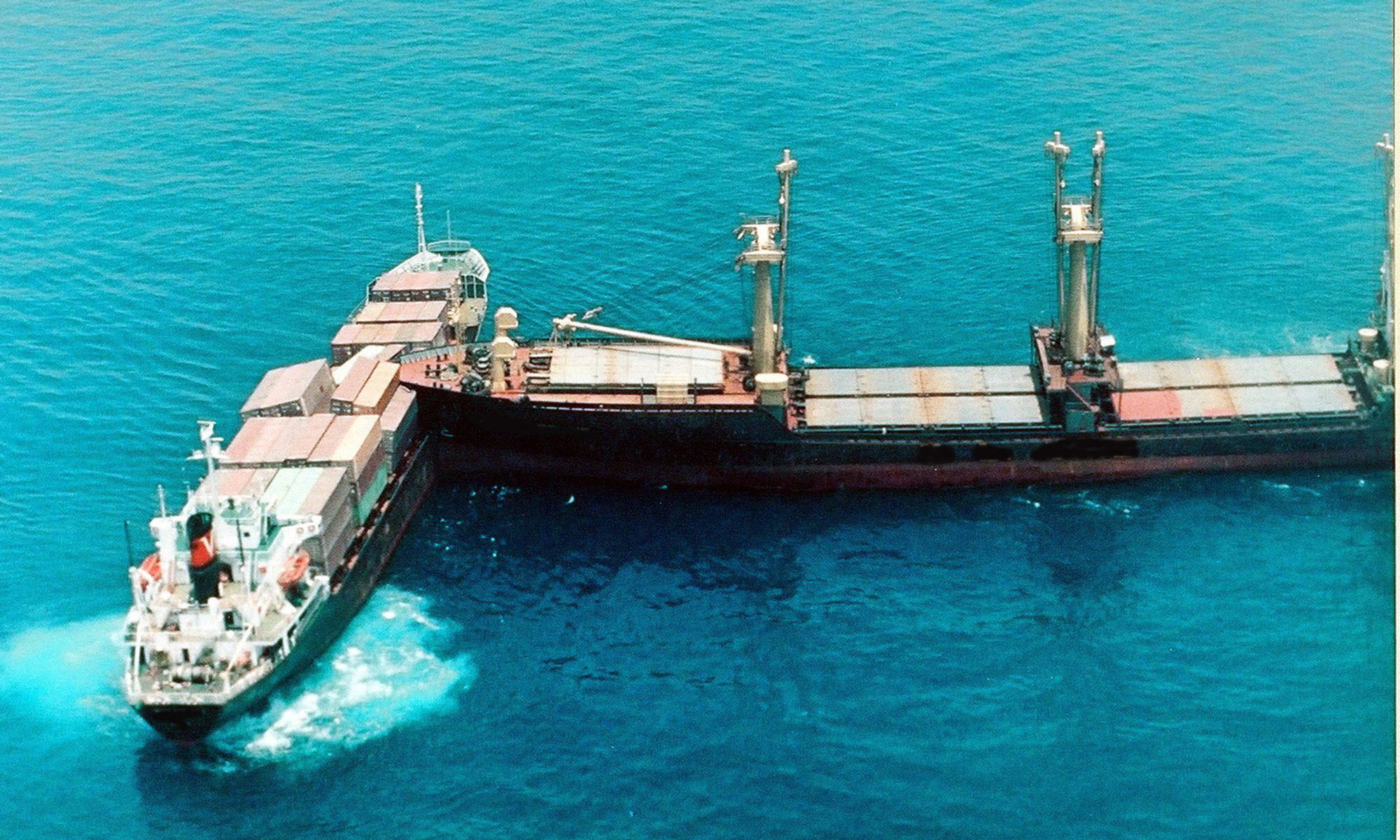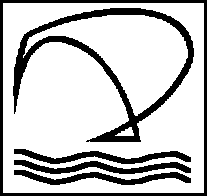Mike Wall is the author of the following books:
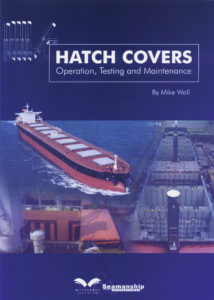
‘Hatch Covers – Operation, Testing and Maintenance’ by Mike Wall. Published 2008 by Witherby Seamanship International. ISBN 13: 978 1 85609344 6. Cost £75 + P&P.
Seen by many to be the ‘bible’ on hatch covers.
***********
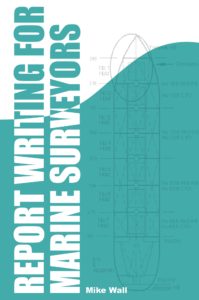
‘Report Writing for Marine Surveyors’ by Mike Wall. Published February 2011 by Petrospot. ISBN: 978-0-9548097-7-5 Available from www.petrospot.com/books. Cost £75 + P&P. Also available from the author.
Reviews:
“This is a very well laid out and presented text on marine surveying with an excellent set of examples and illustrations. It is very detailed on reporting and text choices whilst being technically detailed with respect to English grammar, font selection, etc, which may confuse the average marine surveyor whose first language is not English. Overall, a text book I would put in our library as a reference work for our surveyors.”
Paul Thomas, March 2010.
“Half of the work carried out by marine surveyors is report writing and, as Mike Wall makes clear in his introduction, a quality report is both legally and commercially critical. This 320 page guide to writing a good report is a welcome addition.
One might question how 320 pages worth of guidance is required but It soon becomes clear that writing the report is just the tip of a very big iceberg that includes evidence gathering, interviewing skills and legal knowledge.
Mike Wall, a chief engineer who taught at Warsash before becoming a surveyor, is well placed to produce such a guide, and he explains the subjects with admirable clarity, with some particularly handy hints on writing and presentational style, as well as guidance on producing diagrams. He describes the wide range of different reports that surveyors may have to produce and explains the potentially complex issues around discovery, evidence, protocols and terms and conditions of service.
With the downturn in officer training during the 1980s and 90s now creating a shortage of marine surveyors, this book will serve as a good foundation for those coming into the market, and the extensive set of survey report templates included as appendices will provide a solid framework in which to develop their skills.”
Nautilus Telegraph, March 2011
“Marine surveyors/reviewers have described this as a ‘must have’ book on their shelves, ideal to help a new surveyor learn his craft with some useful tips for more experienced surveyors.
Twelve full specimen reports are included in the appendices which survey companies will find of use. Microsoft Word templates in .rtf format are available of these reports to those who purchase the book from the publishers.”
“I refer to the ‘Report writing for marine surveyors’ book frequently. In fact reach for it more now, than I did when I first got it. It is an excellent primer on surveying, with an abundance of templates, and a fair number of examples of issues that a surveyor may encounter. It is a relatively small book that fits in a rucksack or a laptop bag, and you will find it dog eared after a period of time. I consider it part of my kit, along with flashlights, a tape measure, calipers, a metric/SAE ruler, a camera and what ever gauges might be necessary. I highly recommend the book.”
Will Naden, Cabras, Island Marine Services, Guam, October 2014
***********
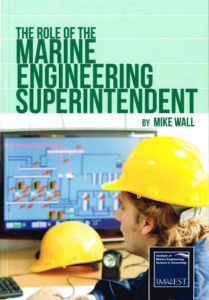
‘The role of the marine technical superintendent’ by Mike Wall. Published June 2014 by IMarEST. ISBN: 978-0-9565600-6-3. Cost £25 + P&P.
***********
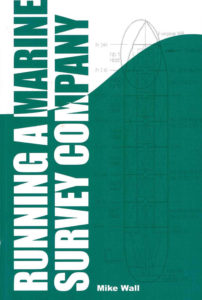
‘Running a Successful Marine Survey Company’ by Mike Wall. Published by Petrospot, published late January 2015. ISBN: 978-1-908663-20-7 Available from www.petrospot.com/books. Cost £75 + P&P. Also available from the author.
Reviews:
“Setting up a marine survey company is a very popular career choice for seafarers looking to work ashore. There are many who have made the move successfully, but there are also many who can tell you that it is not an easy transition. Mike Wall made the move after a seagoing career that took him to the rank of chief engineer, as well as time as a senior lecturer at Warsash and as a superintendent with a UK coastal shipping company.
He now has almost 30 years of survey experience, and as well as developing ship survey training courses, he wrote the excellent book Report Writing for Marine Surveyors, published by Petrospot in 2011. With his new title, he starts from the basics – explaining the role of the marine surveyor, the different types of survey work, and the ways to achieve professional standing in an occupation which presently lacks any requirements for formal qualification.
Well structured, the book is written with admirable clarity and has high presentational standards, with lots of handy charts and tables, as well as specimen forms. Mr Wall explains the differences between being a ‘generalist’ and specialist surveyor, and the different routes for training and career development.
There’s some particularly good advice on how to set up a company and, for those who are successful, how to be an employer. It’s also hard to think of any element of the operational aspects of marine surveying that is neglected in the book, with sections on such issues as quality assurance, risk assessment, time management, filing and archiving systems, marketing, client relations, ethics and codes of conduct, invoicing and debt collection.
Mr Wall has produced what is sure to serve as the essential guide for seafarers looking to move into surveying. And, in fact, there’s so much of value in his book that it would also serve as a useful general guide for anyone thinking of setting up in business.”
Nautilus Telegraph, August 2015.
“For those who really want to know what it is like to start a business from scratch, as a Marine Surveyor this is essential reading. For those who are already Marine Surveyors but who still wonder why the competition is doing better than they are, this is essential reading. For those who are already successfully running a Marine Surveying business this is essential reading because it is a reality check for all. Mike tackles all of the difficult areas such as ethics, sales, conduct and time management head on with advice collected from the experience of having been there.
For anyone involved in our business this book has been long overdue.”
Ian Biles, August 2015
“I have read Mike’s book several times and think it an excellent work and ideal for anybody starting out from the beginning and also equally highly suitable for an experienced surveyor who wants to expand or improve his business. I found the sections on training, experience and how to start particularly interesting.
Also of great use was the section on finances – usually the bugbear that many otherwise competent people find the most difficult to control and understand. The book gives the reader a good understanding of the pros and cons of that aspect of the profession and enables him or her to know about and understand the difficulties before launching into the deep.
I would certainly recommend the book to anybody considering starting his or her own marine surveying company and I think that it fills a large gap in the literature on marine surveying.”
Jeoffrey Casciani-Wood
***********
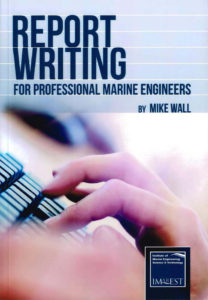
‘Report Writing for Professional Marine Engineers’ by Mike Wall. Published Nov 2014 by IMarEST. ISBN: 978-0-9565600-5-6. Cost £25 + P&P.
***********

‘Buying a Condominium Unit in Thailand’ by Mike Wall. Published in Dec 2016 by the author. Cost US$9.99 + P&P from the author.
***********

‘Running a Condominium Building in Thailand’ by Mike Wall. Published in Dec 2016 by the author. Cost US$9.99 + P&P from the author.
***********
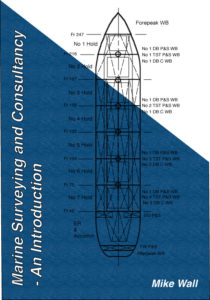
‘Marine Surveying and Consultancy – An Introduction’ by Mike Wall, published Jan 2017 by the author. Cost US$99 + P&P.
ISBN: 9-78-616-429-228-4.
Synopsis
Having been an independent marine surveyor and consultant for many years the book is based on the author’s experiences. It is primarily aimed at those wishing to become independent marine surveyors and consultants. It covers many aspects of their work with some covered in depth.
Marine surveys are of two types, proactive and reactive. In the former the surveyor inspects a vessel before a voyage or activity to ensure that it meets relevant requirements, standards and/or international conventions. A reactive survey is carried out after an event or incident. The former tend to be carried out by marine surveyors whilst the latter tend to involve an opinion from a marine consultant.
The book contributes to the debate on the differences between marine surveying and marine consultancy. It covers different types of marine survey and marine consultancy assignment including hull damage, explosions, fire, pollution, sinkings, salvage and bunker disputes. Collisions, cargo disputes, crew injury and machinery failure are also covered with several examples.
Many marine consultants also aspire to becoming marine accident investigators and expert witnesses. These two areas are covered in detail, dealing with lawyers, going into court, and working with other experts and subcontractors.
The lack of awareness of our industry also extends to that of the marine/consultant, often being mistaken for marine biologists. Consequently. it takes time to explain the roles to the layman. When it is explained the response is often “That must be a really interesting job.” Hopefully, you will agree after reading this book.
Foreword by Captain Barry Thompson:
As a glance at the contents page will indicate, this book covers many aspects of the work of marine surveyors and consultants. Most of the subjects Mike has included have been covered in quite some depth, especially when referring to the role of consultants but these are helpful to surveyors too. Indeed, many surveyors are aspiring consultants.
Although Mike states in his preface that the content of the book “are purely the opinion of the author” I have to acknowledge that I agree with almost all of them. I believe he has done a service to our profession by passing on the results of his wide experience.
Captain C.B.Thompson
RD FNI Hon.FIIMS
*******
Nautilus Telegraph, April 2017
With 30 years of service as a marine surveyor and consultant, including commercial and public sector work, former chief engineer officer Mike Wall is well placed to produce these guides for those considering following in his footsteps.
With extensive experience of producing training materials, he also has the knack of making stuff simple, and he does this to good effect here. With carefully crafted text, he explains everything right from the basics without sacrificing interest or appearing patronising.
There are many types of surveyor, and both guides go into the complex nature of the profession and the special skills and experience demanded by the different disciplines, as well as the fuzzy dividing lines between some of them. Wall provides lots of useful tips about how to get started, set operating principles and manage your finances. He also offers advice on how to make the transition from marine surveyor to marine consultant, or how to specialise in accident investigation and expert witness work.
Available from the author.
***********
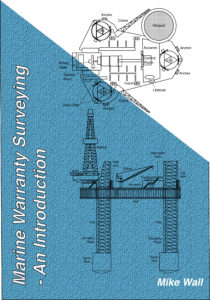
‘Marine Warranty Surveying – An Introduction’ by Mike Wall, published Jan 2017 by the author. Cost US$99 + P&P. Available from the author.
ISBN: 978-616-429-215-4
Synopsis
The book is intended for those considering entering the marine warranty surveying discipline of marine surveying. It introduces prospective marine warranty surveyor (MWS) to the wide variety of work available.
Marine operations are still of higher risk to underwriters, who, not having this expertise, need appropriate technical support to assess the risks. This involves the services of an additional independent third party specialist. The MWS is the eyes and ears of the underwriter and claims adjuster. His role is to assess risk by reviewing the technical and operational aspects of a marine project on their behalf, the ultimate aim being the issue of a certificate of approval.
The book deals with the various types of warranty survey and the role of the MWS, including:
- The various types of warranty and legal aspects.
- The London market joint committees.
- Codes of practice and Scope of Work.
- Required outcomes.
- Surveyors’ liability.
- Port risk surveys.
- Lay-up and reactivation surveys.
- Tow approvals.
- Stowage of deck and project cargoes.
- Port and terminal surveys.
- Shipyard risk assessments.
- Warranties in the offshore sector including mooring, anchor spreads, rig lay-ups and wind farm operations.
It is hoped that the book will be a tool for training and a reference source for the new and experienced Marine Warranty Surveyor.
Foreword by Steve Weiss:
Mike’s book brings an understanding of the complexities and the variety of experience and training that an MWS must have to practice in the field. He combines the practical – recommended procedures, list of guidelines necessary to fully practice that are, I think, meant to complement a seaman’s skills.
Like his report writing book before, it is a practical guide that, while it can point you down the path, requires practical application in Marine Surveying to have its full effect. Marine Warranty Surveying especially takes experience, mentorship, and a good level head to be successful in the field. It also requires the ability to put that field experience on paper in a way that is understandable and easy to read. The combination of the right experience and the ability to write, make the two books of Mike’s useful tools.
Mike has done an exceptional job in putting words together to describe a complex subject. I look forward to the publishing of the book with its future use in the industry as a tool for training and a reference source for the new and experienced Marine Warranty Surveyor.
Steven Weiss, CPCU, AMIM, NAMS-CMS
Senior Vice President – Marine
Aspen Insurance
Houston, Texas
******
Nautilus Telegraph, April 2017
The warranty surveying title delivers great insight into the remarkable range of this particular role, with some fascinating background about the evolution of marine insurance and the many areas of overlap between the warranty surveyor and other parties.
It also includes some important material about liability, standard of care, professional indemnity and terms and conditions of service.
Both books form part of a four-strong series covering all aspects of marine surveying, with the remaining volumes providing detailed advice on report writing and how to run a marine survey company. Well indexed and with glossaries of specialist terms and handy references for further reading, they provide the ‘go-to’ point for anyone thinking about making the move into this important area of the maritime profession.
******
Work Boat World, May 2017
Whilst his book may well be an ‘introduction’ Mike Wall needs no introduction here. He is undoubtedly the best known marine surveyor anywhere as well as being a prolific author of books about all kinds of technical marine subjects including surveying. He also co-incidentally authored a brilliant book on starting and managing a small business.
This book is rather more specialised than most but it describes a speciality that Mr Wall is particularly familiar with. That is a very complex and tricky aspect of marine surveying activity and one where surveyors work particularly closely with insurance underwriters.
According to London Offshore Consultants website a marine warranty surveyor ‘provides independent third party technical review and approval of high value and/or high risk marine construction and transportation project operations…’. Essentially, here the author describes all that this summary entails.
He writes for the practical, professional reader in no-nonsense common sense terms. This provides both practitioners and their clients with most of what they need to know about this very important process.
***********
‘Marine Cargo Surveying – An Introduction’ by Mike Wall, shortly to be published by the author. Cost US$99 + P&P. Available from the author.
Books published by the author may be ordered from: mikewallassociates@gmail.com
‘Ship Superintendency – An Introduction’
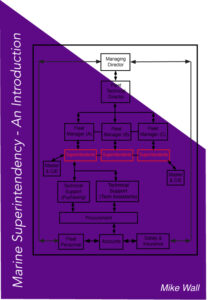
Self-published January 2020. Cost US$149 + P&P. ISBN: 978 616 565 752 5.
Contact: mikewallassociates@gmail.com
A5 x 652 pages
The maritime career path can lead in many directions and work as a ship superintendent has long been a popular choice for former seafarers seeking a move ashore. There are probably few people better placed than Mike Wall to provide insight on how to make that move, and this 650 page book provides as comprehensive a guide as you could ever hope for.
Not all superintendents are the same, of course, and the book describes the differences between the roles, responsibilities and qualifications of technical, vetting, docking, newbuilding, nautical, cargo, and personnel superintendents, as well as giving some frank advice on the transition from life onboard to life in an office.
To provide the broader context, there’s a wealth of information about the way
in which the shipping industry works and the plethora of external parties with which a superintendent has to interact. The book also provides a useful selection of glossaries, checklists and references that enable the reader to dig even deeper
It is a vital text for anyone in any of the occupations involved with ships. Interestingly, the author has bravely self-published from his home in Thailand. This has ensured that its price is remarkably reasonable for such an important, extensive and valuable book.
Dr Neil Baird
‘Lifting and Lifting Gear Aboard Ship’
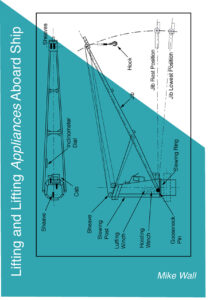
Self-published December 2020. Cost US$120 + P&P. ISBN: 978-616-577-283-9.
Contact: mikewallassociates@gmail.com
9” x 6” x 346 pages
There are other books out there on lifting equipment and cranes but none dedicated solely to the marine environment and written by somebody who has been there, seen it and done it firsthand.
Whether a novice studying for your certificate of competency, an experienced mariner (deck or engine room), a marine or cargo surveyor or a superintendent there is something for everybody in this book.
Detailed and written in an easy to read style with numerous diagrams, tables and illustrations it brings together the many strands (pun intended) of lifting operations into one single and authoritative reference and I highly commend it to you.
Ian Biles
Master Mariner, BEng (Hons), MA, CEng, CMarEng, EurIng
********
Aboard Ship’. In my 20+ years of experience in cargo surveying and superintendency I have seen all manner of lifting devices, heavy lift ships and shore based terminal rigs. I believed some of the discussion to be a little out of date as one would expect from the old sea dog himself though I impressed myself immensely when a recent condition survey instruction forced me to come face to face with a set of Velle Derricks. The fact that I had the book in the footwell of my car shoreside gave me the arsenal in which to win my argument with the Chief Mate who simply referred to the pair as Derricks. “No no my good Chief”, I said, as my smile widened for the only time that day – it was not the best seagoing example I’ve been on.
So out of date? Certainly not and highly relevant in many aspects of general cargo and shipboard operations on other vessel types. All carry gantries, winches and cranes of some description allowing the ship to conduct basic tasks; down to offloading trash or loading spares / stores and simply lowering the gangway. Mike has covered all aspects here and what the ship’s crew can do to maintain condition in general use and routine inspections. Obviously, a well-run ship with its safety management system fully in force and up to date will hopefully already be one step ahead but this text makes for great reference to
implementing, undertaking or even improving the management system in place. More so, the budding surveyor needs an ever extending library of reference texts and this is an excellent book to assist in the learning of lifting gear and equipment inspection; what to look for, how and where with integration to the legal aspects and current legislation. Any surveyor involved with ships on/off hire, pre-purchase or generic condition surveys on any commercial vessel would benefit from a stock copy. Being a fellow author, in my case with the IIMS Diploma programme, I ponder if the text of this book would make for an excellent assessed module. Food for thought…
One cannot recommend such books more highly and I for one will certainly be looking at similar examples to boost my own position in industry.
Lee Warltier MIIMS
Sterling Global Marine Limited
****************
Mike Wall, who produces a very interesting and practical column for Baird Maritime, is a widely experienced British born and trained marine engineer. For the latter half of his career he has worked as a marine surveyor and educator, mostly in Asia. There are few marine engineering “tricks” he is unaware of.
Fortunately for the wider maritime world, Mike is a very enthusiastic and accomplished writer who has published several excellent books on his favourite subject from his lair near Bangkok. This is the ninth and latest of those and, like its predecessors, it is excellent, wide-ranging, interesting and useful.
Well-illustrated, clear and easy to understand, the book offers information that is not readily obtainable elsewhere on this vitally important subject. It is also intensely practical and based on the author’s lengthy “hands on” experience, observation and study.
Anyone who is involved in any way with cranes, winches and lifting gear, particularly those utilising wire ropes, would be negligent if he does not carefully study this important work that could very well be life-saving.
INVALUABLE!
Dr Neil Baird
‘Supercargo Operations – An Introduction’
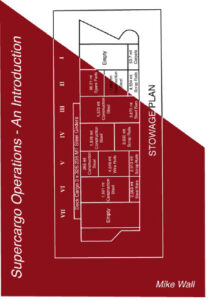
Self-published January 2021. Cost US$140. ISBN: 978-616-577-534-2.
Contact: mikewallassociates@gmail.com
9” x 6” x 568 pages
There are many different cargo loading and discharge operations carried out on ships on a day to day basis. These are carried out on, or associated with, the various types of vessels which ply their trades around the world, often requiring supervision by a Supercargo.
This book is aimed at helping those aspiring to this role in their career progression, choices and actions. Whilst becoming a Supercargo appears to be a natural progression for a cargo superintendent, it is not necessarily automatic, often requiring higher qualifications and several years of specialist experience.
Whilst it might be expected that readers of this book will have some form of shipping related experience, the text is also aimed at those who may have no shipping experience at all. For those with previous experience, it issuggested that revision of some of the subjects can only be a good thing.
The provides a sound basis and knowledge of the many aspects of cargo operations particularly with respect to the Supercargo’s role. It is not intended to be a comprehensive compendium covering all aspects of the subject, hence the title – an introduction. However, there is sufficient depth in the material provided to be able to gain a good understanding of the industry to be able to make informed views.
Hull Surveying – An Introduction
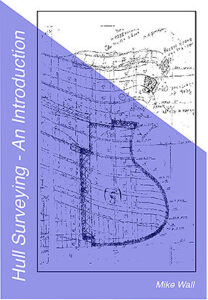
First published December 2021
ISBN: 978-616-588-304-7
Having reviewed Mike Wall’s latest book, Hull Surveying – An Introduction, my first thoughts were that I wish I’d had the benefit of carrying this book, as my technical companion, on site during my career as a hull and warranty surveyor.
When I joined the Noble Denton worldwide group, marine and engineering surveyors and consultants to the offshore oil and gas sector, my only training consisted of the words …. “You will meet challenges requiring you to draw on inner strength. We want men who make events happen, even the seemingly impossible. You must possess a knack for breaking down overwhelming projects into chewable pieces, find solutions and appreciate lessons learned, even in failed attempts.”
Intuitively, I felt the interviewer’s words taught me absolutely nothing. I possessed hands-on technical knowledge, but I did not know how to be a surveyor. Mike’s latest book describes in well written, easy to understand terms, exactly that – it is a comprehensive overview of surveying. In hindsight, for me to gain the required experience necessitated years working in the field.
In my early years Mike’s book would have also been invaluable for me to learn how to structure a technical report and/or seek guidance against legal pitfalls.
That notwithstanding, I did know that a surveyor must not be influenced or controlled by others in matters of opinion or conduct and that above all what was needed was honesty and objective opinion of the entity being surveyed or inspected whether it be a ship, barge, rig, or cargo.
It is my considered opinion ‘Hull Surveying – An Introduction’, is Mike Wall’s best and most comprehensive book to date.
Capt. Des Kearns. MIIMS, SiArb.
This book was originally a single book relating to both hull and machinery surveying but became so large that it had to be split into two parts. This is the second of the two. It has been written with three possible types of surveyor in mind.
The first group will have had very little or no marine experience and who are seeking to enter, what is to them, an entirely new profession. As such, much of the material presented will be new to them being designed to give them a grounding in the profession of marine surveying.
The second group will be people who have some related marine experience such as ship’s deck or engineering officers who are seeking to leave seafaring but wish to remain involved with the marine industry in a wider field.
The final group will be experienced marine surveyors who want to extend their knowledge into the wider fields of the profession and continue their personal professional development by being exposed to areas of expertise with which they may not be familiar.
The book mainly relates to steel merchant vessels. Several types of material have also been covered which may be found on such vessels, together with GRP which is used in various other types of vessel.
The book contains ten case histories based on actual incidents which show what hull damage investigations might look like It also covers various reporting techniques relating to such incidents.
The Author:
Mike Wall has been a marine educationalist for more than 50 years, writing training modules and books on various shipping technical subjects. Mike was a marine surveyor and consultant for 25 years, having operated his own company in New Zealand, Fiji and Hong Kong. Since retiring to Thailand he has continued to provide training seminars to various shipping organisations around the world
More recently, Mike has authored 45 training modules for diplomas and certificates in marine superintendency, ship surveying, yacht and small craft surveying and ship building and repair for various marine training organisations.
Machinery Surveying – An Introduction
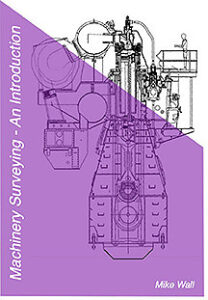
First published December 2021
ISBN: 978-616-588-305-4
There are books on surveying yacht and small craft engines and there are books for professional engineers studying for their STCW Certificates but as far as I am aware this is the first book dedicated to surveying commercial ship engines, machinery and equipment. In preparing to write this forward I did some research and found two publications, both dated 2000, giving details of diesel and petrol engines but again nothing specific to surveying these engines. Thus, whilst it might be a niche market the book should be welcomed by any with an interest or involvement in surveying commercial ships.
Mike is a professional colleague and fellow author with whom I have worked over many years. As a retired seagoing Chief Engineer, Government Surveyor and Independent Marine Surveyor Mike has both the qualifications and experience to write such a book and he has distilled this down into a readable format that is easy to follow. With detailed text, line drawings and photographs of broken and damaged machinery the book makes an excellent reference source.
One particular aspect that really stands out for me are the thirteen case histories that Mike has included. Based on actual incidents and claims this gives context to what the book is seeking to achieve as well as providing examples of what the final output following an investigation might look like.
As a bookworm myself and an avid collector of marine technical reference books this is an excellent reference work where none exist and it will duly take its place, in a category of its own, alongside many other excellent reference works written by the author.
Ian Biles
Master Mariner, BEng (Hons), MA, CEng, CMarEng, EurIng
On back cover:
This book was originally a single book relating to both hull and machinery surveying but became so large that it had to be split into two parts. This is the second of the two. It has been written with three possible types of surveyor in mind.
The first group will have had very little or no marine experience and who are seeking to enter, what is to them, an entirely new profession. As such, much of the material presented will be new to them being designed to give them a grounding in the profession of marine surveying.
The second group will be people who have some related marine experience such as ship’s deck or engineering officers who are seeking to leave seafaring but wish to remain involved with the marine industry in a wider field.
The final group will be experienced marine surveyors who want to extend their knowledge into the wider fields of the profession and continue their personal professional development by being exposed to areas of expertise with which they may not be familiar.
Each of the above groups should have a grounding in marine engineering. For this reason, the book does not cover the basics, eg, engine cycles, etc.
The book contains thirteen case histories based on actual incidents which show what machinery damage investigations might look. It also covers various reporting techniques relating to such incidents.
The Author:
Mike Wall has been a marine educationalist for more than 50 years, writing training modules and books on various shipping technical subjects. Mike was a marine surveyor and consultant for 25 years, having operated his own company in New Zealand, Fiji and Hong Kong. Since retiring to Thailand he has continued to provide training seminars to various shipping organisations around the world
More recently, Mike has authored 45 training modules for diplomas and certificates in marine superintendency, ship surveying, yacht and small craft surveying and ship building and repair for various marine training organisations.
Heavy Lift & Project Cargo Operations – An Introduction
by
BSc, MSc, FIMarEST, FRINA, CEng, QDR
First published June 2022
ISBN: 978-616-590-934-1
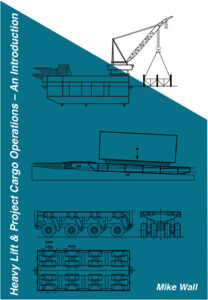
There are many different types of heavy lift and project cargo operations (HLPCO) carried out on a day to day basis around the world. These can range significantly in size, shape and distance to be transported. They can involve various types of equipment which require specific skills to be able to operate them effectively, efficiently and safely.
All heavy lift and project cargoes need to be transported from the place of construction to the final installation site. When the place of manufacture is some distance from the site there will need to be some form of horizontal and/or vertical heavy lift transport by rail, road or sea. This will entail extensive planning, often involving expensive specialist equipment operated by teams of highly skilled personnel.
The book introduces the reader to the theoretical and practical aspects of such activities, eg, rigging and stability aspects of lifting, transporting and loading out heavy loads. It also deals with risk assessments, safe working practices and legal aspects relating to these operations. It is intended for those wishing to enter heavy lift and project cargo operations and those who may be intending to become surveyors in this field of cargo operations.
******
When the author asked me to review his new book, I thought “Hey, interesting! A primer on Project Cargo Surveying!”. Those familiar with the subject know that, to date, there have not been many books that cover this topic conclusively.
The last few decades we have seen a major change how, where and what we produce. We saw a major boom in manufacturing industries on almost every continent, and an increase in large infrastructure projects and building sites all over the world. Oil and gas, renewable energy, engineering, mining, and construction industries are profoundly dependent on this type of transportation. We have seen the transportation of massive structures from numerous global origins to a manifold international destination. Shipping these products, known as project cargo requires ships designed and people trained to effectively handle this cargo in often extreme conditions.
Project cargo moves are amongst the most complex types of transportation in the logistics industry. The cargo needs to arrive well before the intended start-up date, regardless of obstacles, time constraints, tight delivery schedules, and safety/regulatory requirements. Project cargo shipments are mostly oversized and generally travel by land, sea, or air to their final destination. Surveyors who operate in this segment of the market must be thoroughly knowledgeable in all these modes of transit.
For aspiring project cargo surveyors there are not many study books that deal with this complex subject. Surveyors that work in this line of surveying must have prior experience, have great people skills and be subject matter experts and be knowledgeable of all ports, facilities as well as ad hoc landing sites in their geographic region.
In order to write this book, the author has sought the advice and input from various industry known subject matter experts. Not many books have included hydraulic platform trailers as well as the heavy lift crane moves in one text.
Please enjoy this book and the case studies.
Ron de Bakker
Oakville, June 2022
